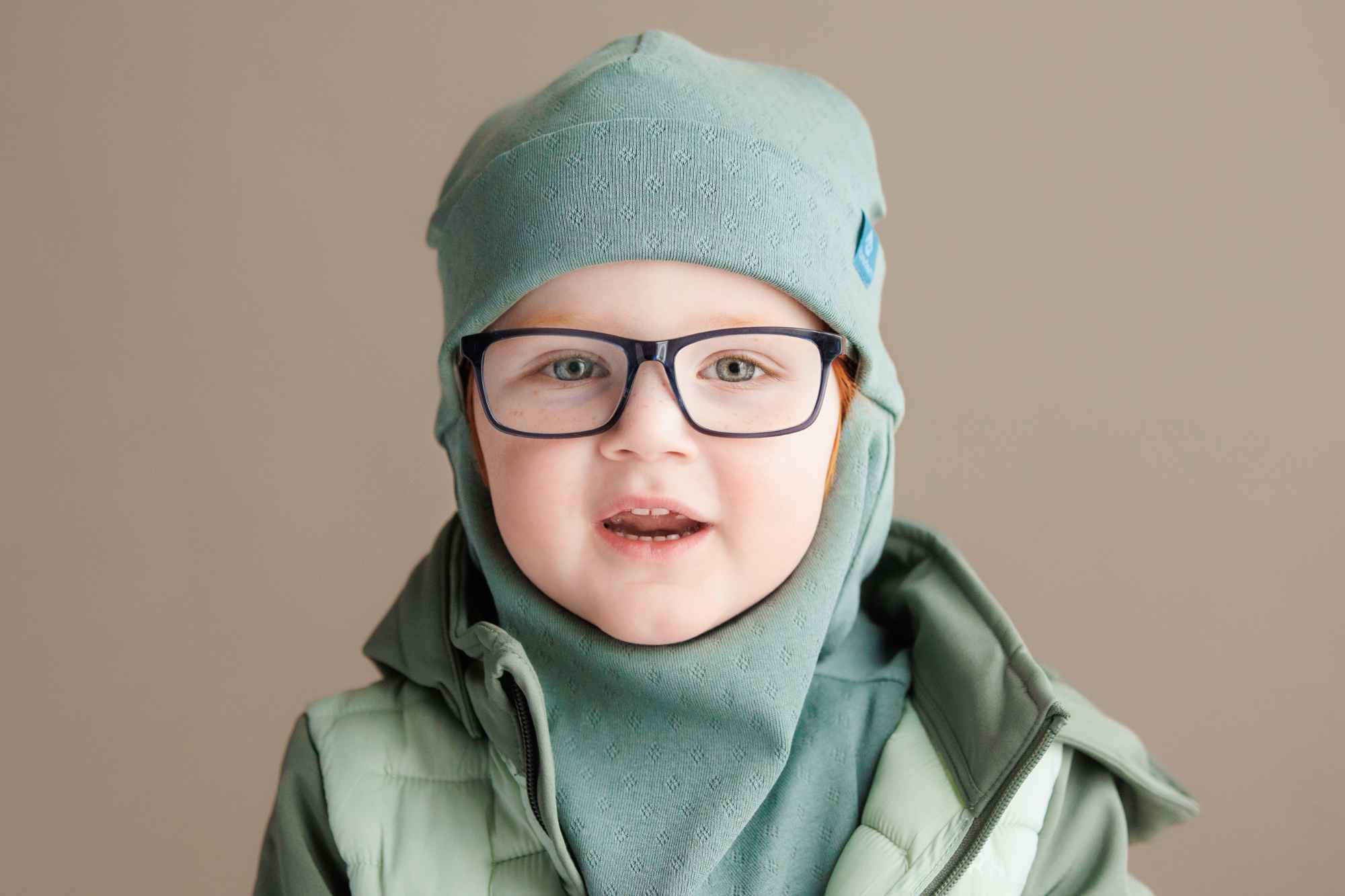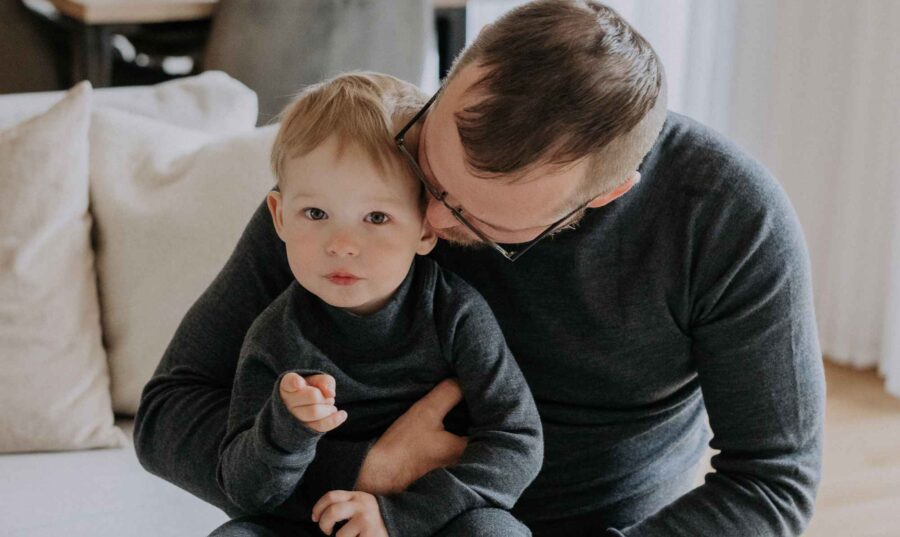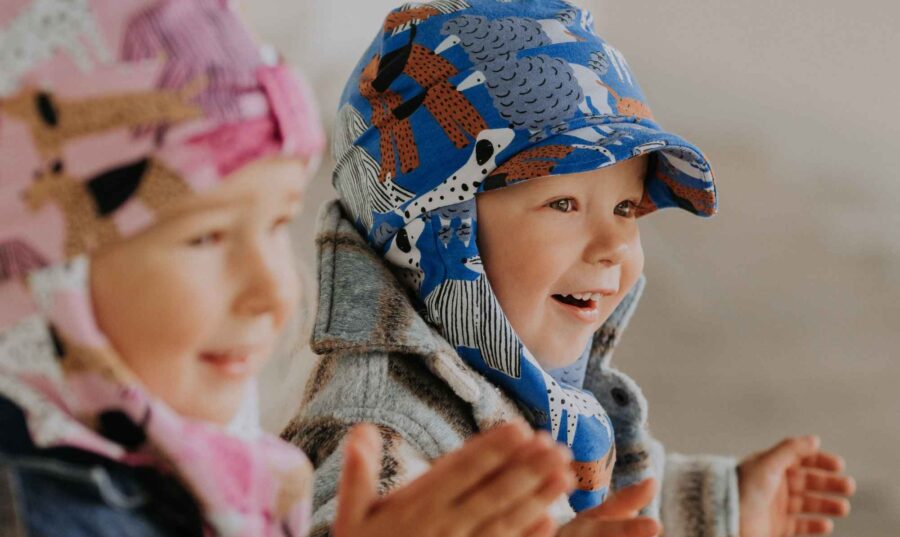Parents often buy clothes with a bit of “room to spare” with the intention of making garments last as long as possible. Unfortunately the same logic does NOT apply to headwear. Hats and balaclavas have to be as close to the real head circumference as possible, which might cause some confusion because most Breden hats are double-sized. So, let’s get it right once and for all!
SIZE DOES INDEED MATTER…
Children grow fast, we get it. But their heads do not! In fact, most kids between the age of 1.5 and 5 years have more or less the same head circumference of approximately 50 to 52 cm. And that means a 50/52 hat or balaclava fits perfectly for several years. But there are some things you should take into account so let’s take a look at a few case studies:
- Example 1. A 3-year-old with the head circumference of 50.5 cm gets a 50/52 sized hat. Since the kid is at the beginning of his or her size there will be plenty of room to grow without the hat being too large to begin with.
- Example 2. A 6-year-old with the head circumference of 52 cm gets a 53/55 hat because parents think that 50/52 is already too small. That is a mistake. 53/55 hats are meant to fit head with a circumference of 55cm and that means this hat will be completely useless for years to come. To solve this problem, we’ve upgraded our size chart by adding sizes 50/51, 52/53 and 54/55 to the mix.
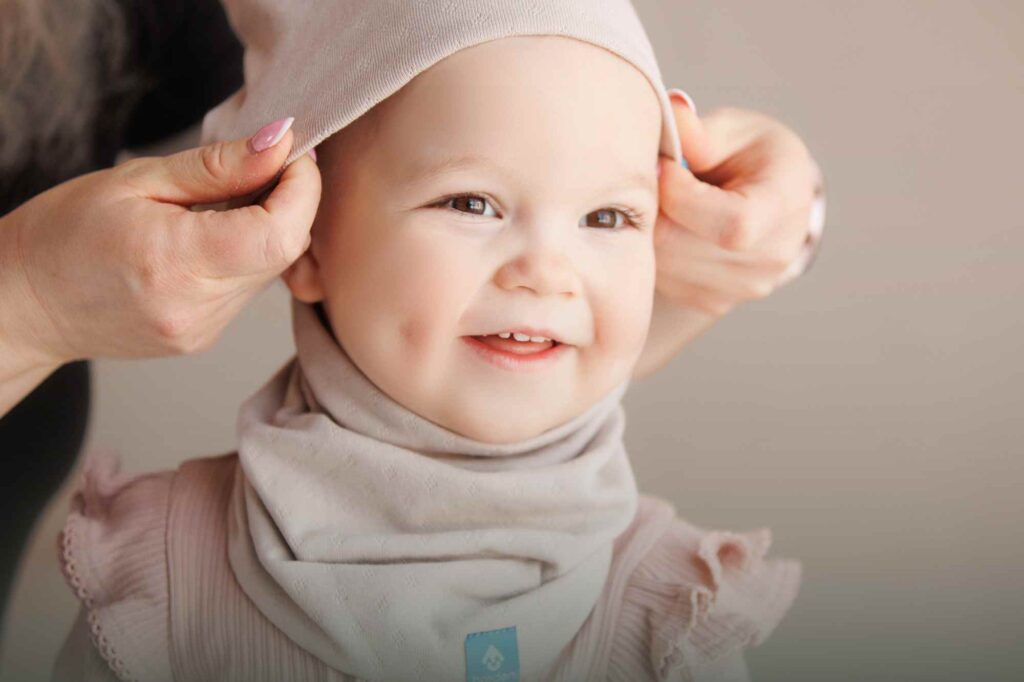
WHAT IS SIZEBAY?
Sizebay is a virtual “fitting room” tool that helps you make the best hat size decision according to your needs – whether it be a hat for you baby, toddler or yourself. Here’s what you do:
- If you don’t know the head circumference, click “Find your measurements” and you’ll see the age and head size ratio that applies in most cases. And if you click on the little cute ruler you can even print out a measuring gadget.
- If you know the head circumference, simply click “Find out your size”, select the number and get your size recommendation.
- To learn more about choosing hats, be sure to click on “Size tips” and if you save your measurements, you can also create as many Sizebay profiles as you want.
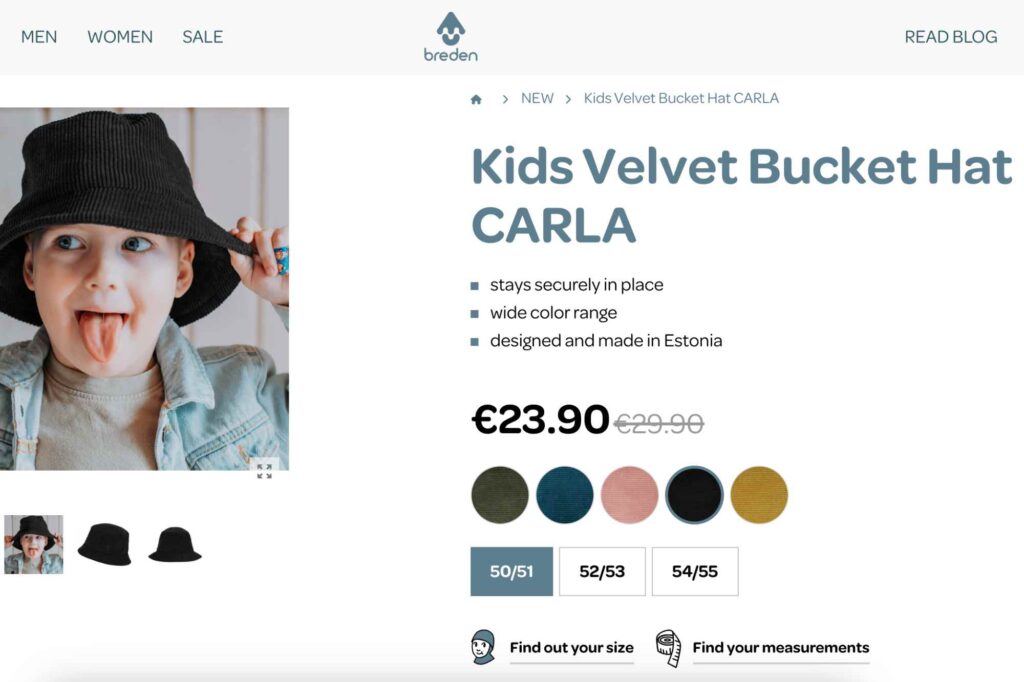
4 HEAD SHAPES
There’s one more problem Breden is constantly trying to solve – how to make hats that are suitable for all heads? That got us thinking: maybe we should consider the shape of the head instead of its circumference? While searching proof for this theory we discovered that heads can generally be divided into 4 types: round, cylinder, irregular and big hair. To verify this theory we conducted “human trials” involving 4 kids with the same head circumference, but different head shapes and a huge pile of hats. There were summer beanies, double-cotton spring hats, winter hat-scarves…you name it! We tried them all on, took pictures, examined the fitting and the results were the following:
- Baggy hats (like KLAUS and DIRK) work better on cylinder shaped heads.
- Peaked kids hats (like BO, SUN and MO) are made for rounder heads.
- Balaclavas suit all head shapes equally well, so do beach hats and all their equals.

MEASURE CORRECTLY!
While the shape of one’s head is a new factor to choosing hats, the circumference has always been key. There are a few key elements to consider in order to get it right:
- Measure straight around the head from its widest angle. If hair is thick or braided, take that into account.
- Use a flexible measuring tape, keeping it as tight as possible while not squeezing the head.
- Pick a hat according to these results not by the size of your previous kids hats.
This chart will help you a lot:

Thank you for reading. If you have additional questions, you can always share your thoughts at info@mybreden.com.
Let’s get it right!
Anne | the content manager of Breden


